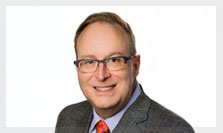 Fast-growing wet AMD blockbuster Eylea delivered a surprise Tuesday, failing to surpass analyst expectations with a showing that prompted maker Regeneron ($REGN) to lower full-year sales guidance for the first time in the drug's three-year history. While CEO Len Schleifer was quick to highlight a new approval for diabetic macular edema that should keep sales riding high, a couple of key differences between the wet AMD and DME markets could mean growth won't happen as quickly as Regeneron--or investors--would like.
Fast-growing wet AMD blockbuster Eylea delivered a surprise Tuesday, failing to surpass analyst expectations with a showing that prompted maker Regeneron ($REGN) to lower full-year sales guidance for the first time in the drug's three-year history. While CEO Len Schleifer was quick to highlight a new approval for diabetic macular edema that should keep sales riding high, a couple of key differences between the wet AMD and DME markets could mean growth won't happen as quickly as Regeneron--or investors--would like.
Eylea missed consensus third-quarter estimates with a $445 million performance, Regeneron said Tuesday. Investors weren't too happy with the news, sending shares down more than 7% in premarket trading. As RBC Capital Markets analyst Adnan Butt wrote in a note seen by Investor's Business Daily, they'd expected that "Eylea growth would be significant given the recent diabetic macular edema approval."
But as Bob Terifay, Regeneron's commercial SVP, explained to analysts on a conference call, they shouldn't expect to see the same eye-popping Eylea launch numbers out of the DME market--at least, not right now. "Uptake will be slower than in wet AMD," he said.
 |
| Regeneron Commercial SVP Bob Terifay |
Why the lag time? There's a "significant difference" between the two markets, he said, starting with physicians' fear that in wet AMD patients, ongoing retinal edema can cause hemorrhage that leads to sudden vision loss. So they look for alternative treatment options that might dry the retina, and that's what was happening when Eylea hit the market.
When the drug rolled out, "there was a large patient population with a history of inadequate response" to rivals Lucentis and Avastin from Roche ($RHHBY), and their "physicians were waiting to switch them to Eylea," Tarifay said.
There's also the fact that anti-VEGF agents like Eylea haven't been used to treat DME for as long as they've been used in wet AMD. That means the market isn't as well-developed, and the current go-to approach--laser treatments--are still "heavily entrenched," as Tarifay put it.
And then there's the difference in payer dynamics between the two markets. Most wet AMD patients are over 65 and are covered by traditional Medicare, compared with only an estimated 30% of DME patients. Not only are commercial payers slower to provide drug coverage, but "even when coverage is granted, notification to physicians, and the loading of reimbursement information to payer portals, doesn't occur in a predictable manner," Tarifay cautioned.
The moral of the story? While DME sales will continue to grow, they're not going to turn out the forecast-busting numbers investors may be used to. But on the bright side, that wet AMD indication hasn't stopped turning out double-digit sales leaps: While Eylea may have missed estimates, it still posted a 23% sales swell.
- see the call transcript from Seeking Alpha
- get more from Investor's Business Daily
Special Reports: Top 15 drug launch superstars - Eylea | 15 Highest-Paid Biopharma CEOs of 2013 - Leonard "Len" Schleifer - Regeneron